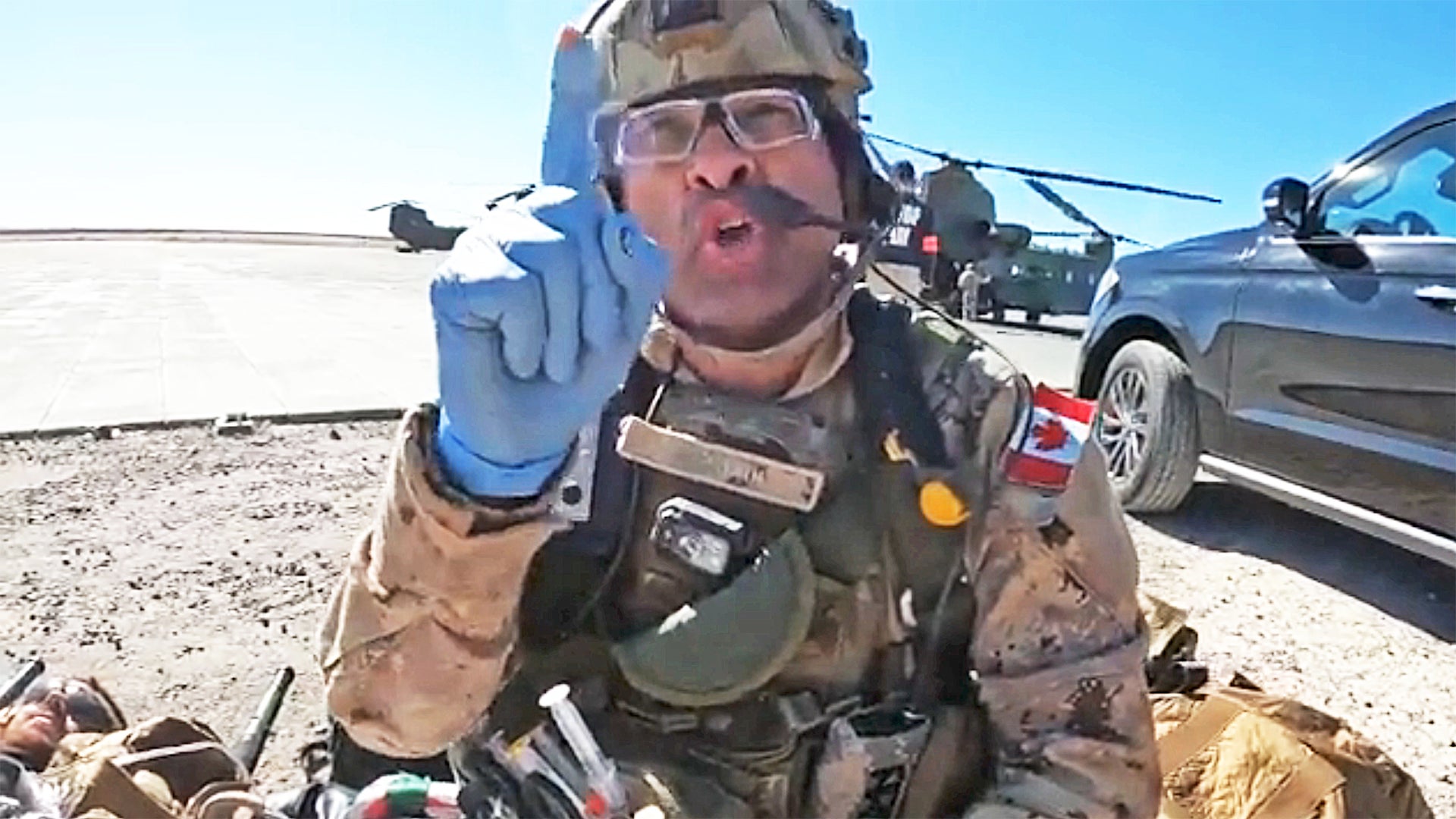They have one of the most challenging and rewarding jobs in any military. Airborne combat search and rescue (CSAR) and casualty evacuation (CASEVAC) personnel are field medics who are armed and able to get into very hot combat zones to extract their injured comrades. But snatching-up wounded personnel under fire is often just the beginning of their battle. Stabilizing patients in rocking and vibrating helicopters — which can be extremely hot or cold inside — that are trying to safely make it to a field hospital is about as challenging a medical environment as any.
Once they have arrived, getting their patients transferred as fast as possible to waiting medical teams is absolutely crucial. Every second counts, but information conveyance is absolutely key to the patient’s chances of survival, too. Executing this with extreme clarity and under incredible stress is an essential talent, especially when airborne communications are limited or non-existent. Case in point the video below of emergency room doctor, flight surgeon, and Canadian Medical Emergency Response Team (CMERT) member Trevor Jain executing a patient transfer with incredible precision and focus:
When it comes to modern battlefield rescue operations, it’s become all about “the golden hour.” Getting the patient to a medical installation capable of surgery within an hour dramatically increases their chances of survival. This lesson has been learned the hard way, over two decades of perpetual warfare, primarily in Afghanistan and Iraq, but in other locales, as well. Beyond CASEVAC, the CSAR mission is especially speed-dependent. With the recovery of a downed pilot or wounded soldier in a hostile area, for instance, every minute you can get to them sooner, the better their chances of not falling into the enemy’s hands, or worse.
The hardware is also a key part of the effectiveness of modern military CASEVAC and CSAR operations. In Afghanistan, it become clear that the CH-47 Chinook was a highly desirable platform for this kind of work in the country’s hot and often high-altitude environment. Over time, this and many other lessons learned from these operations informed new ideas both on how these missions are flown and in terms of what aircraft should fly them, as well as what crew and onboard capabilities were optimal.

For Canada, even deep into the Global War On Terror, it became clear that its own aeromedical combat rescue capabilities had languished and they found themselves dependent on allies for it. This, along with the reacquisition of the CH-47 Chinook (designated CH-147 in Canada) and so much real-world knowledge to capitalize on from its allies’, as well as civilian operations, led to the creation of a new aeromedical evacuation capability known as the Canadian Emergency Medical Response Team, or CMERT. This concept sees the Chinook being used as something akin to a flying critical care center, with doctors, nurses, and medical technicians on hand, as well as troops to help with force protection, which can extract patients from challenging and hostile areas and get them to a surgery-capable facility quickly and reliably.
Lieutenant Colonel Leilani Doyle gives an amazingly frank talk about how CMERT actually came to be and its unique attributes:

As Colonel Doyle mentions, the concept was put to the test in Mali. Here is a bit of first-hand experience from CMERT operations there:

Now, as Canada continues to codify its CMERT concept, we are getting excellent videos like the one of Trevor Jain in action at the top of this article, as well as him giving a tour of the Canadian Chinook when it is transformed into a flying trauma bay for CMERT operations:
The folks who do this work, as well as the aircrews who support them, are real heroes. They must be prepared to use deadly force at a moment’s notice while also being focused on preserving life however possible. It is such a unique and high-stakes job. Canada seems to be going all out to do it the very best they possibly can with the CMERT concept. It will be interesting to see how it evolves over time, but in the meantime, it is great to know professionals like this are out there for when Canadian or allied soldiers have their worst day on the battlefield.
UPDATE:
CMERT Physician Specialist Major Andrew McLaren, who was featured in the video from Vertical Magazine embedded in the article above, also gives us a fantastic and greatly detailed look at how these teams operate aboard the Chinook:

Contact the author: Tyler@thedrive.com
